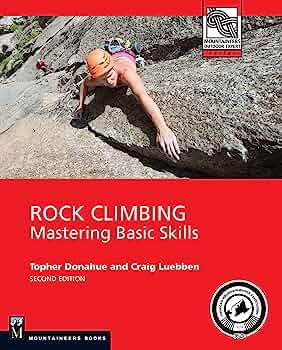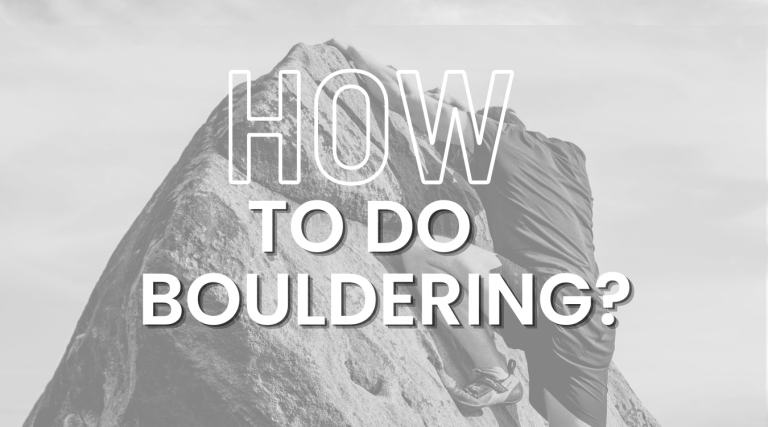Mastering Bouldering Techniques: A Comprehensive Guide
Bouldering is an exciting and challenging form of rock climbing that focuses on short, powerful routes called “problems.” If you’re looking to improve your bouldering skills, mastering various techniques is essential. In this article, we’ll cover the fundamentals of bouldering and delve into essential and advanced techniques to help you become a better climber. Let’s get started!
The Basics of Bouldering
What is Bouldering?
Bouldering is a form of rock climbing that involves climbing shorter routes, or problems, without the use of ropes or harnesses. Climbers rely on their strength, technique, and problem-solving abilities to conquer these challenging routes, typically found on boulders or indoor climbing walls.
The Importance of Warm-Up and Stretching
Before diving into bouldering techniques, it’s crucial to emphasize the importance of warming up and stretching. Preparing your body can help prevent injuries and improve your performance. Incorporate dynamic stretches and light cardio exercises, like jogging or jumping jacks, to increase your heart rate and warm up your muscles.
Essential Bouldering Techniques
Footwork Fundamentals
Edging
Edging refers to using the edges of your climbing shoes to gain traction on small footholds. This technique is crucial for maintaining stability and conserving energy. Practice placing your foot precisely on footholds and maintaining a strong, balanced position.
Smearing
Smearing is the art of using the rubber sole of your shoe to create friction against the rock or wall, even when there are no visible footholds. This technique is useful on slabs and sloping surfaces. Press your foot firmly against the surface and trust the grip of your shoes.
Heel and Toe Hooks
Heel hooks involve placing your heel on a hold to create leverage, while toe hooks involve hooking the top of your foot behind a hold. Both techniques can help you maintain balance and reach higher holds.
Body Positioning and Movement
Balance and Center of Gravity
Maintaining balance and controlling your center of gravity are essential for efficient bouldering. Keep your hips close to the wall, and focus on distributing your weight evenly between your hands and feet. This will help you conserve energy and minimize the strain on your muscles.
Flagging
Flagging is a technique used to counterbalance your body weight while reaching for a hold. It involves extending one leg out to the side or behind your body, without placing it on a foothold. This allows you to maintain balance and control your movement more effectively.
Twisting and Drop-Knee Techniques
Twisting your body can help you reach farther holds and maintain balance. Drop-knee technique, also known as the Egyptian, involves bending one knee and turning your foot outward to create leverage and stability. Both techniques are useful for navigating complex bouldering problems.
Hand and Grip Techniques
Different Types of Handholds
Familiarize yourself with various types of handholds, such as jugs, crimps, pinches, and slopers. Knowing how to use each type effectively will improve your overall climbing ability.
Crimping
Crimping is a technique used to grip small, narrow holds. Place your fingertips on the edge of the hold, with your thumb either underneath or on the side for support. Be cautious with crimping, as it can put strain on your tendons and lead to injury.
Open-Handed Grip and Pinching
An open-handed grip involves keeping your fingers straight and using friction to grip holds. This technique is particularly useful for slopers and can help reduce the risk of injury. Pinching involves using your thumb and fingers to grip a hold, like you would with a clothespin. This technique is useful for pinches and other irregularly-shaped holds.
Advanced Bouldering Techniques
Dynos and Deadpoints
Dynos are dynamic jumping moves used to reach distant holds. They require explosive power and precise coordination. Deadpoints, on the other hand, involve controlled, static movements to reach a hold at the apex of your motion. Both techniques require practice and timing to master.
Manteling and Downclimbing
Manteling involves using your arms to push your body up and over a ledge or hold. It requires upper body strength and balance. Downclimbing is the process of descending a boulder or wall in a controlled manner, using the same techniques as climbing up. This skill is essential for maintaining safety and preserving energy during bouldering sessions.
Bouldering Safety and Etiquette
Falling Techniques
Falling is an inevitable part of bouldering. Learning how to fall safely can help prevent injuries. When falling, try to relax your body, keep your arms and legs slightly bent, and aim to land on your feet. Roll onto your back or side to absorb the impact.
Spotting and Crash Pads
Spotting is the act of helping a climber fall safely by guiding their body towards the crash pad. Effective spotting requires good communication and trust between the climber and the spotter. Crash pads are essential safety equipment for bouldering outdoors, providing a cushioned surface to fall onto.
Conclusion
Bouldering techniques are crucial for improving your climbing abilities and conquering more challenging problems. By mastering footwork, body positioning, grip techniques, and advanced moves, you’ll become a more efficient and confident climber. Remember to always prioritize safety and practice good climbing etiquette.
FAQs
- How can I improve my bouldering technique? Practice regularly, focusing on different techniques and challenging yourself with new problems. Take the time to observe and learn from more experienced climbers, and consider taking a bouldering clinic or course to further develop your skills.
- Is bouldering a good workout? Yes, bouldering is a full-body workout that targets various muscle groups, including your core, upper body, and legs. It also helps improve your flexibility, balance, and problem-solving skills.
- How can I prevent injuries while bouldering? Warm up and stretch before climbing, maintain proper body mechanics, and learn to fall safely. Use appropriate safety equipment, such as crash pads and spotters, and listen to your body to avoid overexertion.
- How do I choose the right climbing shoes for bouldering? Look for shoes with a snug fit, a downturned toe for better grip on holds, and sticky rubber soles for improved traction. Comfort and personal preference play a significant role in choosing the right climbing shoes.
- What is the difference between bouldering grades and climbing grades? Bouldering grades use the V-scale (V0, V1, V2, etc.) to indicate the difficulty of a problem, whereas climbing grades use the Yosemite Decimal System (5.5, 5.6, 5.7, etc.) for roped climbing routes. Bouldering grades focus on the difficulty of individual moves, while climbing grades consider the route’s overall length and sustained difficulty.

